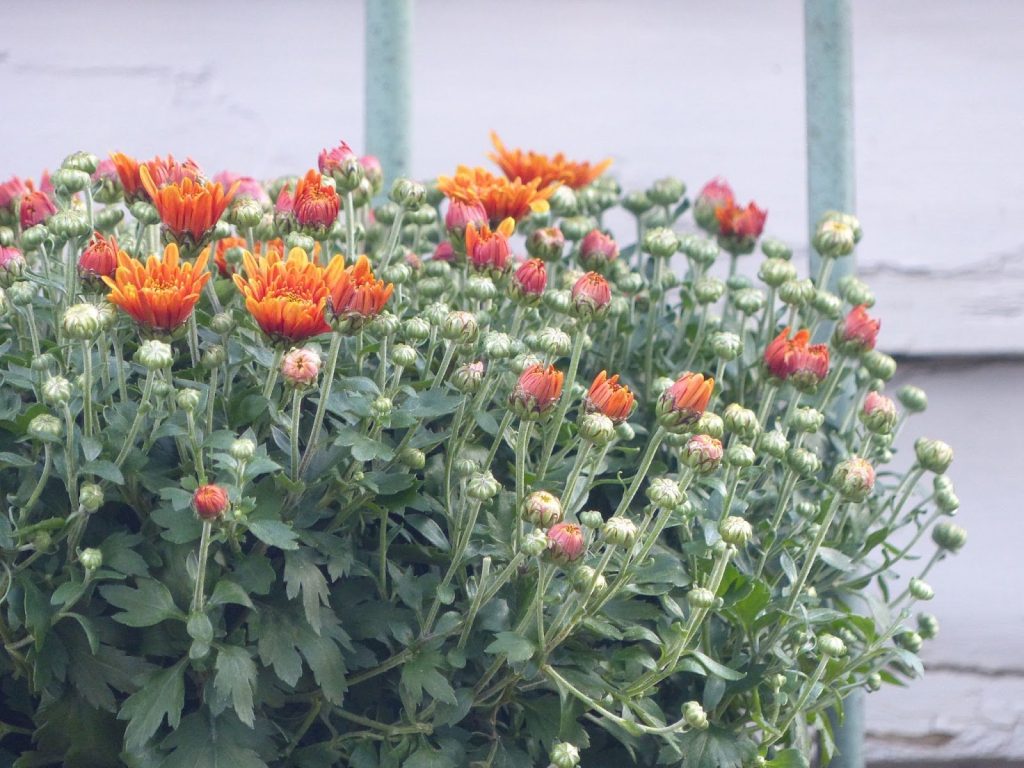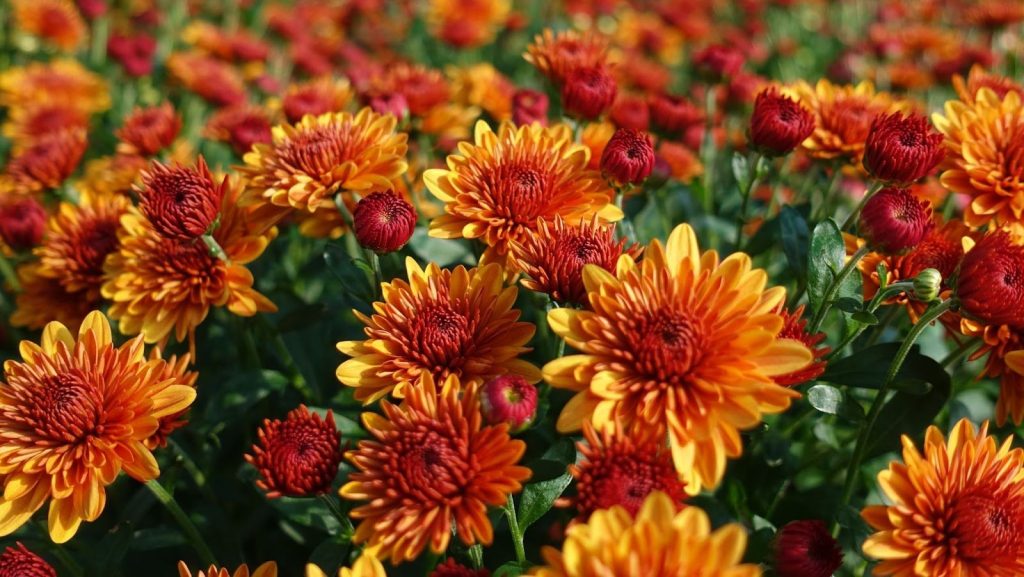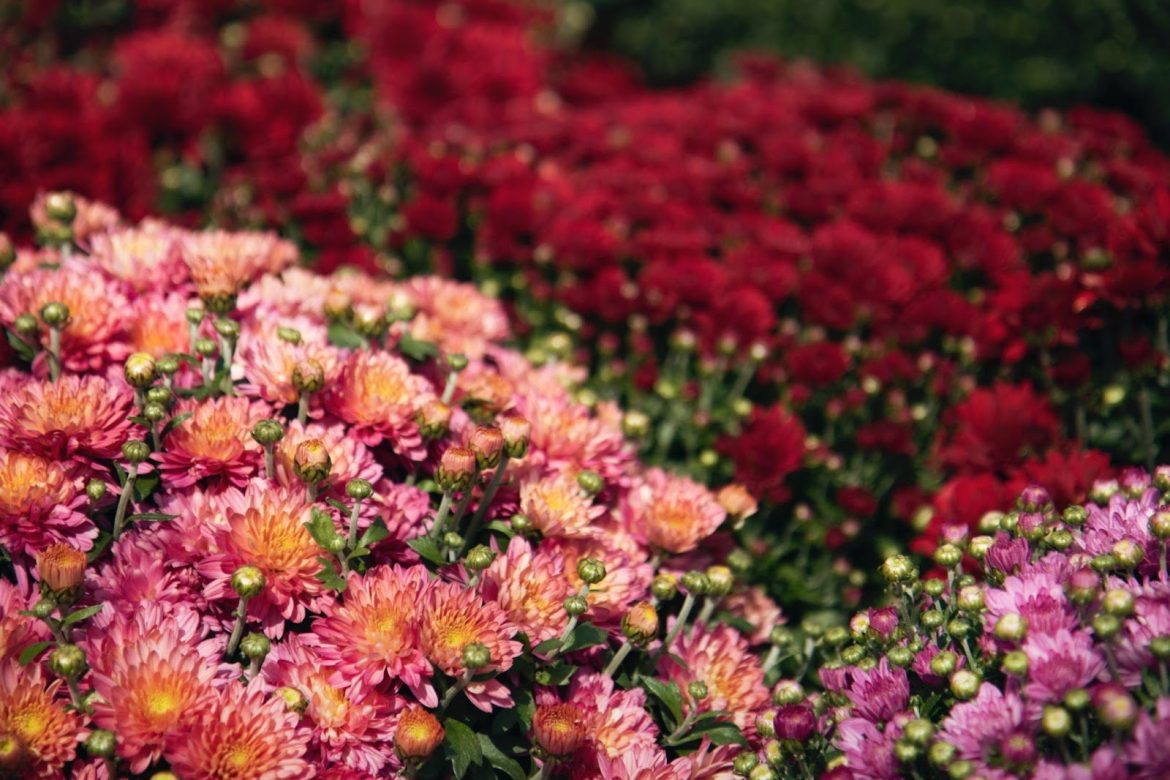Fall mums are a great way to add a splash of color and beauty to your garden this season. With their bright blooms in a variety of colors, these hardy flowering plants are the perfect choice for cooler temperatures.
Whether you’re a seasoned gardener or simply enjoy nature’s beauty, planting fall mums is a delightful way to embrace the changing seasons.
In this article, we will explore the joy of planting fall mums and provide you with valuable tips to ensure your autumn garden is a sight to behold.
So grab your gardening gloves, and let’s dive right in!
Key Takeaways
- Planting fall mums is an outstanding way to add beauty and vibrancy to your outdoor space when the weather starts to cool.
- Provide your mums with well-drained soil and enough water.
- Additionally, your mums need plenty of light and regular pruning.
- Be aware of potential pests and diseases that could affect your mums. These include aphids, mites, and powdery mildew.
Introducing Fall Mums
Fall is the perfect time to add a splash of life to your garden with beautiful fall mums. Also known as chrysanthemums, these vibrant flowers come in various red, gold, and bronzy hues.
Fall mums are flowering plants that are beloved for their stunning autumnal colors. They belong to the daisy family and come in a variety of shapes, sizes, and colors.
These captivating flowers typically bloom during the fall months, bringing a burst of color to gardens, parks, and front porches.
Fall mums are known for their hardiness and versatility, making them a popular choice for both seasoned gardeners and amateur plant enthusiasts.
As summer blooms start to fade, mums can provide consistent color during the cooler months.
Benefits of Fall Mums
Fall mums have a number of benefits that make them a popular choice among gardeners.
One of the main advantages is their ability to withstand cooler temperatures and thrive in the crisp autumn air. It means they can bring a burst of life to a garden when other flowers start to fade away.
In addition to their beauty and ability to liven up a garden, fall mums are also perennials. Therefore, with the proper care, they will return year after year. This factor makes them a cost-effective option for long-term garden planning.
Another interesting aspect of fall mums is their long history of use in medicinal treatments. They have been used to treat numerous ailments, including chest pain, high blood pressure, diabetes, fever, colds, headaches, dizziness, and swelling.
Planting Mums
Creating a vibrant burst of autumn colors is easy with mums.
To get started, pick a sunny spot in your garden or container that has proper drainage.
When planting mums in containers, use pots with drainage holes and fill them one-third of the way up with potting mix.
Jostle the roots of the mums gently before placing them in the pots and bury the root ball one inch below the soil surface. Water them well after planting.
For traditional in-ground gardens, plant mums 18-24 inches apart to ensure good air circulation. Dig a hole that is two times the size of the root ball and deep enough for the plant to be one inch below the soil surface. Fill in the hole with soil and press firmly to secure it.
Clustering mums together creates a stunning visual impact. Alternatively, using mums as fillers
for vacant spots along garden edges adds a splash of color.

Tips for Planting Mums
Growing mums is an excellent way to bring vibrant colors and delicate blooms to your garden. Follow these simple steps to ensure your mums thrive.
- Select a sunny spot with well-draining, healthy soil.
- Prepare the ground by adding organic matter and loosening the soil around the roots.
- Dig a hole slightly larger than the root ball and place your mum in, being careful not to bury it too deep.
- Water thoroughly after planting and maintain consistent moisture levels.
- To help your mums continue to flower, remember to pinch off spent blooms and prune any leggy stems to keep the plant compact.
- As fall approaches, keep your mums protected from frost by covering them overnight or moving them indoors.
Soil and Watering
When planting mums, choosing a sunny spot with well-drained soil is critical. A soil with a pH level between 5.8 and 6.8 is ideal.
To achieve this, add a layer of well-decomposed compost to your garden bed. If you’re uncertain about the pH level, use a test kit from your local garden center.
To avoid root rot, keep your mums away from low spots that can become soggy. Consider planting them in containers or raised beds instead.
Water your mums thoroughly after planting or repotting. Then, water them every other day or when the soil feels dry to the touch.
Adding mulch around the base will help retain moisture and protect the roots from cold temperatures.
Light and Pruning
To ensure healthy growth, mums need five to seven hours of sunlight per day. Not enough sunlight can lead to leggy plants with fewer blooms.
For fall bloomers planted as annuals, you only need to pinch off spent flowers to encourage more blooms.
However, regular pruning is required if you are planting mums in the spring.
Remove three to six inches of new growth every couple of weeks from spring to the fourth of July. Doing this will ensure your mums will have showy blooms come fall.

Pests and Diseases
Chrysanthemums are beautiful plants, but they need special care to stay healthy. Two common pests that gardeners should watch out for are leaf miners and aphids.
- Leaf miners lay eggs on the leaves of the chrysanthemum plant, resulting in tunnels or trails that can weaken the plant.
- Aphids feed on the plant’s sap, causing the leaves to wilt and become distorted.
Fungal diseases can also damage chrysanthemums. Leaf spot and powdery mildew are two common diseases that thrive in moist conditions.
To protect your chrysanthemums, space them properly and water them early in the day so any excess moisture evaporates before nightfall.
Conclusion
Planting fall mums is an outstanding method to add beauty and color to your landscape during the autumn season. If you follow the proper growing techniques, you can ensure healthy growth and abundant blooms.
Be sure to give your mums well-drained soil and enough water. They also need plenty of light and regular pruning.
On top of that, stay aware of potential pests and diseases like aphids, mites, and powdery mildew. Keep an eye out and take steps to prevent or address any issues.
With the proper care and attention, your fall mums will be a stunning addition to your garden.
Was it helpful?

Enamored with the world of golf Jack pursued a degree in Golf Course Management at THE Ohio State University. This career path allowed him to work on some of the highest profile golf courses in the country! Due to the pandemic, Jack began Inside The Yard as a side hustle that quickly became his main hustle. Since starting the company, Jack has relocated to a homestead in Central Arkansas where he and his wife raise cattle and two little girls.

